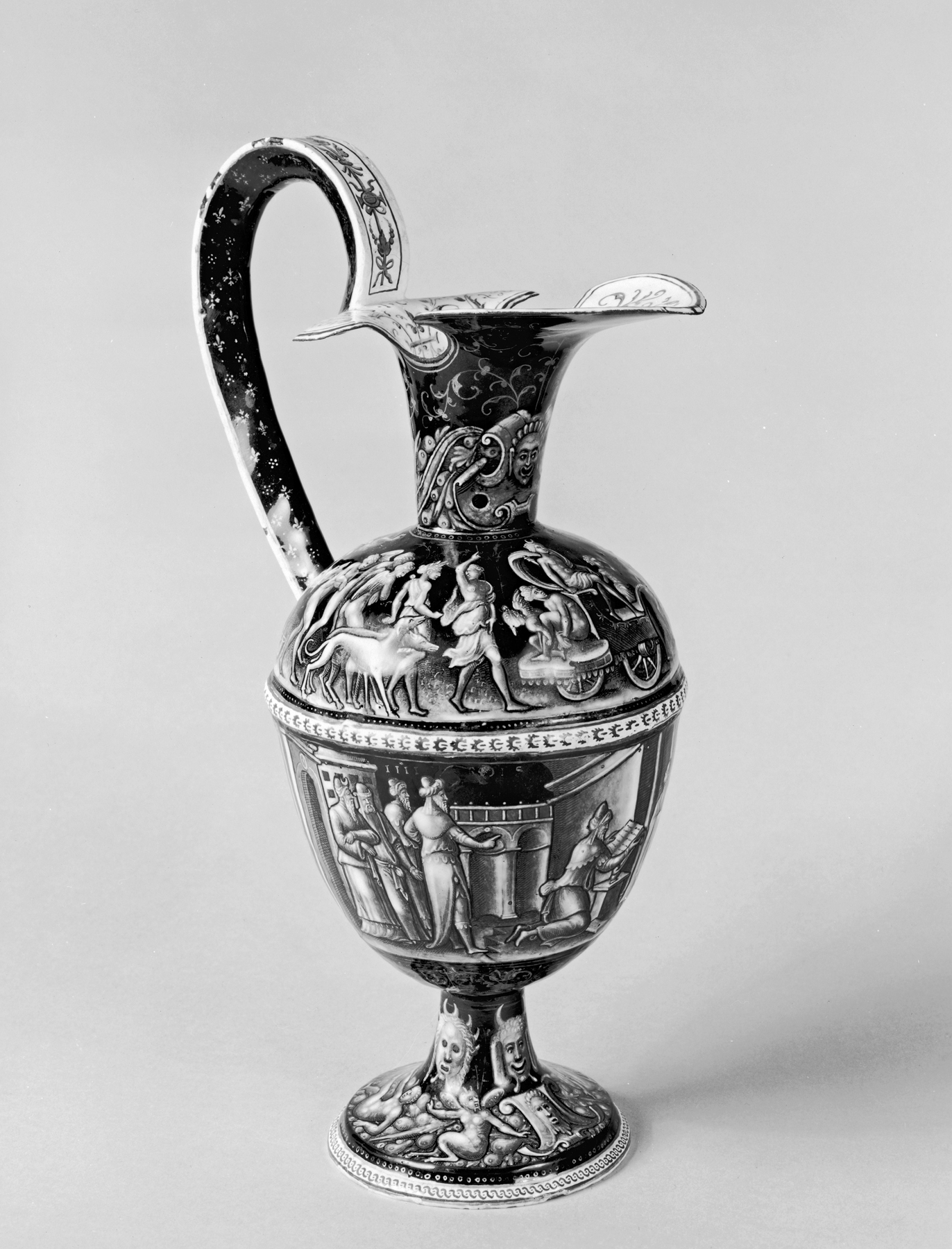Ewer with the Triumph of Diana and Josiah Reading the Law
(Renaissance Europe )
This ewer was a wedding gift to Francis II (reigned 1562-67) from his bride, Mary Stuart. On the upper band, Diana, chaste goddess of the hunt, rides on a cart in victorious procession, followed by nymphs and animals. Venus and Cupid, goddess and god of carnal love, are tied up on the back of the cart, representing chastity's control over desire. The theme is often found on 16th-century marriage gifts and, here, acknowledges the responsibility of a queen to ensure the purity of the family's blood line. The scene below-from the Old Testament book of 2 Kings, in which Josiah, king of Judah, reads the law publicly, reaffirming the covenant with God-evokes the greatest responsibility of a king: to rule righteously. Both scenes were adapted from contemporary prints.
Provenance
Provenance (from the French provenir, 'to come from/forth') is the chronology of the ownership, custody, or location of a historical object. Learn more about provenance at the Walters.
Frédéric Spitzer, Paris, by purchase; Sale, Paul Chevallier and Charles Mannheim, Paris, April 17, 1893, no. 542; Charles Borradaile, Brighton, England, by purchase; George Robinson Harding, London [date and mode of acquisition unknown]; Henry Walters, Baltimore, [date of acquisition unknown] by purchase; Walters Art Museum, 1931, by bequest.
Exhibitions
| 2002 | A Renaissance Gem Revealed: Petrarch's Triumphs Disbound. The Walters Art Museum, Baltimore. |
| 1897 | Burlington Fine Arts Club, 1897. Burlington Fine Arts Club, London. |
Geographies
France, Limoges (Place of Origin)
Measurements
H: 11 1/8 in. (28.2 cm)
Credit Line
Acquired by Henry Walters
Location in Museum
Accession Number
In libraries, galleries, museums, and archives, an accession number is a unique identifier assigned to each object in the collection.
In libraries, galleries, museums, and archives, an accession number is a unique identifier assigned to each object in the collection.
44.167


